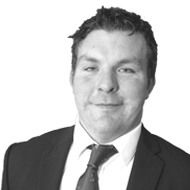We are approaching the end of our first grazing round, and while grazing conditions have been mostly favourable, growing conditions have not.
Currently we have an average farm cover of 590kgs dry matter per hectare, 195 kgs dm per cow, a growth rate of 28 and are stocked at 3.04 cows per hectare.
We are feeding 4 kilos of concentrate, about 6 kilos of silage and filling the gap with grass. My second grazing round is due to start on the 3 April but with the weather predicted to remain unsettled and cool right up to the end of next weekend I’m taking the cautious approach and leaving in meal and silage at its current rates until we get a more favourable forecast.
In hindsight a decision I made last year to delay reseeding 15 acres of old pasture on the milking platform is exasperating our problem.
I decided to delay reseeding these 15 acres solely in order to manage my cash flow. The problem I have now is that these paddocks have not grown a single kilo all winter and are only now beginning to green up.
Also they probably only have a cover of somewhere between 400 and 500 on them now.
Any money I saved last year is now being spent on imported feed. It is also being lost due to decreased production because of the amount of silage in the diet. It’s an expensive lesson and a mistake I will try not to repeat in the future.
Calving
On a more positive note calving has more or less ground to a halt.
With 94% of the herd now calved it has provided us with the opportunity to get on top of our vaccination programme.
All our calves have now received there intranasal shot of rispoval; we started using this last year after a fairly severe outbreak of pneumonia which cost us a lot of time and money.
It has worked well this year as we have only had two cases of pneumonia both of which were easily cured.
We have also got our cows and heifers up to date with their BVD and Leptospirosis vaccines and they will be due their six month IBR vaccine at the end of the week.
Our vaccination programme is a massive cost to us and I have toyed with the idea of possibly cutting some of it back but the fact of the matter is that a preventative veterinary programme is far more cost effective in the long run than a reactionary one.






 This is a subscriber-only article
This is a subscriber-only article











SHARING OPTIONS: